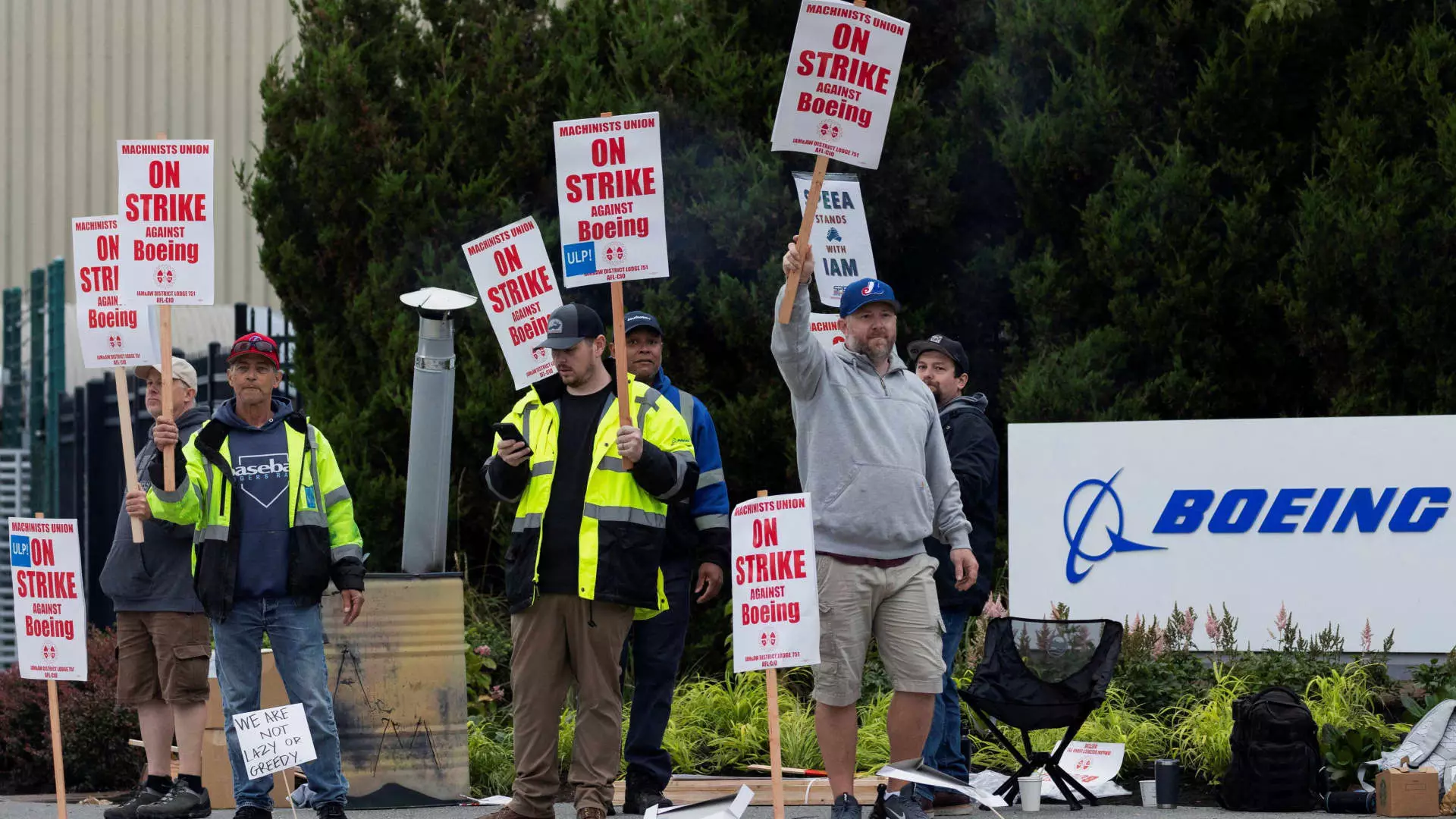Boeing’s Struggles: Navigating a Machinists’ Strike Amid Financial Turmoil

Boeing, the aerospace giant synonymous with innovation and engineering excellence, is currently navigating turbulent waters due to an escalating machinist strike that just crossed the two-week mark. The workers, facing a significant cost of living crisis, are demanding substantial pay raises, further complicating an already precarious financial situation for the company. As Boeing grapples with an extensive debt load of $60 billion, it becomes increasingly crucial to understand the potential ramifications of this work stoppage, both for the company and its employees.
At the heart of the dispute is the plight of Boeing’s machinists, who have walked off the job in a bid for better wages. Many workers are adopting temporary side gigs—ranging from landscaping to delivery services—to sustain their livelihoods during the strike. The escalating cost of living in the Seattle area, characterized by exorbitant real estate prices, has made it challenging for these workers to maintain a comfortable lifestyle in the region they call home. With a staggering 142% increase in median home prices over the past decade, employees like Jake Meyer express desperation, stating, “We can’t afford a home.”
The strike is more than a battle for increased wages; it represents a struggle for economic survival. Given that the average wage increase proposed by the union is around 40%, workers’ expectations stem not only from the current economic climate but also from a long-standing desire for job security and benefits, including the restoration of pensions that were lost over a decade ago. The human element in this labor dispute is crucial; the machinations of industrial negotiations often overlook the very real struggles of the men and women who fuel Boeing’s operations.
As Boeing faces the reality of halting production on its aircraft, the financial implications are staggering, projected to cost the company approximately $50 million a day. This striking figure exemplifies the critical intersection of labor relations and corporate finances in the aerospace industry. Meanwhile, ratings agencies have cautioned that prolonged strikes could lead to a downgrade in Boeing’s credit ratings, thereby elevating its borrowing costs—an alarming prospect for a corporation already wrestling with enormous debt.
Boeing has been unable to return to profitability since 2018, exacerbated by a cascade of manufacturing issues that culminated in operational delays and loss of customer trust. The impact of the strike on operational capabilities is compounded by the fact that many suppliers are also experiencing ramifications, facing shipment halts and production slowdowns. The chain effect of a factory strike reveals intrinsic vulnerabilities within the supply network, highlighting a fragile system reliant on skilled labor amid burgeoning demand for aerospace products.
Negotiations between the machinists’ union and Boeing have stalled, despite both parties acknowledging the dire need for resolution. Union representatives recently expressed disappointment, indicating that meaningful progress has been elusive. The urgency is palpable, not only for the workers but also for company executives like Kelly Ortberg, who is attempting to right the ship amid a broader industry recovery.
Boeing’s latest wage proposal includes a 25% raise over four years, a number the union feels falls short of what is needed to attract and retain talent in a tight labor market. The company is not just in a financial crisis, but it also faces a battle for skilled labor—a challenging environment exacerbated by the pandemic-related layoffs and the subsequent struggle to rehire and re-train sufficient workers quickly enough to meet existing demand.
The strike at Boeing is not an isolated incident but part of a larger trend of labor unrest throughout various sectors in recent years, including the airline industry, auto manufacturing, and entertainment. Energized by the pandemic’s economic impacts, workers across the nation are pressuring employers for fair compensation, reflecting a growing collective sentiment that prioritizes equitable treatment in the workplace.
Government support for a resolution is also materializing, with Transportation Secretary Pete Buttigieg expressing optimism that both parties will strive for an agreement that benefits workers while allowing Boeing to regain its footing. However, the challenges remain significant, particularly given that the technical expertise of the workforce is hard to replace, and layoffs could reverberate through the industry for months.
As Boeing’s machinists continue to march for a fair deal, the stakes couldn’t be higher for all involved. Both the employees—a dedicated yet strained workforce—and the company, struggling to return to profitability, stand at a crucial crossroads. The resolution of this strike holds implications not only for Boeing’s immediate future but for its long-term viability in a competitive industry. To restore its reputation and operational stability, Boeing must heed the concerns of its workforce while striving to navigate the complex waters of labor relations and fiscal responsibilities. The coming weeks will be crucial in determining whether this storied company can reconcile its ambitions with the needs of those who contribute to its legacy.





